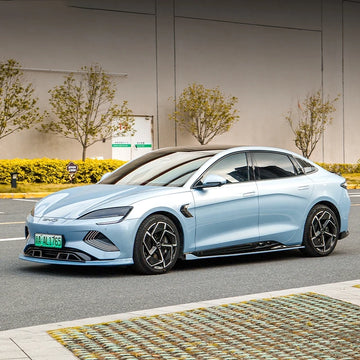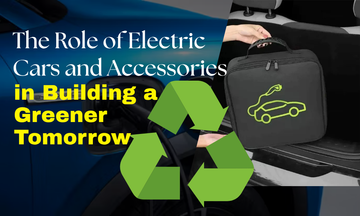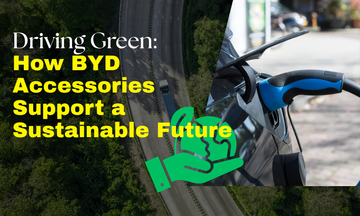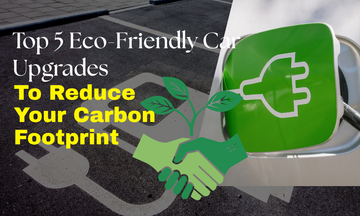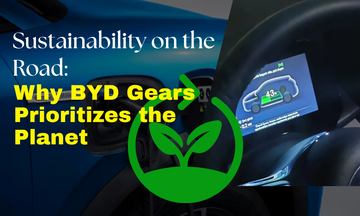Electric vehicles (EVs) and their associated technologies are central to reducing environmental impact and accelerating the transition to a sustainable future. Below is a detailed exploration of how EVs — along with the latest accessories and technological advancements — contribute to a cleaner planet.
Reducing Emissions
✅ Zero Tailpipe Emissions
-
What it means: Electric vehicles produce no direct exhaust emissions.
-
Why it matters: This eliminates local air pollution, especially in densely populated urban areas.
-
Example: Unlike diesel cars that emit particulate matter and nitrogen oxides, EVs keep city air cleaner.
✅ Average CO₂ Reduction of 1.5 Million Grams Annually
-
Calculation: Compares lifetime emissions of EVs vs. traditional combustion vehicles, accounting for electricity generation, manufacturing, and driving.
-
Practical significance: Equivalent to planting ~25 mature trees each year — a substantial reduction in your personal carbon footprint.
✅ Equivalent to Avoiding Four Return Flights
-
Carbon comparison: An average return flight emits ~370 kg of CO₂; an EV saves ~1,500 kg of CO₂ yearly, equivalent to four flights.
-
Environmental context: This metric provides a relatable perspective on the real-world impact of switching to an EV.
Energy Efficiency
✅ 87–91% Battery Energy Conversion Efficiency
-
Technical advantage: Electric motors convert most stored energy directly into motion, with minimal heat loss.
-
Engineering benefits: Fewer mechanical parts and direct power transmission maximize energy use.
✅ Gasoline Vehicles: Just 16–25% Fuel Energy Conversion
-
Inefficiency breakdown: Large energy losses occur through heat dissipation, mechanical friction, and exhaust systems.
-
Comparative insight: Highlights the clear technological superiority of electric powertrains over internal combustion engines.
Battery Technology Advancements
✅ Lithium Iron Phosphate (LFP) Batteries
-
Chemical benefits: A more stable chemical structure with reduced risk of thermal runaway.
-
Performance perks: Longer battery life, better safety, and a lower environmental impact during production.
✅ Improved Thermal Stability
-
Temperature management: LFP and newer chemistries enable reliable performance in extreme conditions and reduce the need for complex cooling systems.
-
Safety implications: Fewer battery-related incidents and more consistent energy delivery.
✅ Enhanced Energy Storage Capabilities
-
Storage efficiency: Higher energy densities mean longer driving ranges and faster charging potential.
-
Technological progress: Ongoing improvements in battery chemistry continue to extend EV range and performance.
✅ Reduced Environmental Impact During Production
-
Manufacturing considerations: Lower use of toxic materials and more sustainable extraction processes.
-
Lifecycle assessment: Modern battery production uses more recyclable components and has a lower overall carbon footprint.
Comparative Emissions Data
-
Gasoline vehicles: Emit ~11,435 lbs of CO₂ per year, including emissions from fuel combustion, manufacturing, and maintenance.
-
Electric vehicles: Emit ~3,932 lbs of CO₂ per year when accounting for electricity generation, battery production, manufacturing, and charging infrastructure.
-
Takeaway: A significant reduction in annual emissions highlights the environmental benefits of driving electric.
Emerging Trends
✅ Smart Energy Management
-
Intelligent charging schedules, integration with the electrical grid, and optimization for renewable energy sources.
✅ Modular and Recyclable Accessories
-
Accessories designed for easy replacement and recycling, reducing waste and supporting a circular economy.
✅ Integration with Renewable Energy Systems
-
Opportunities for synergy with solar charging stations, home battery systems, and vehicle-to-grid technologies.
✅ Advanced Battery Recycling Technologies
-
Innovations in material recovery reduce the need for mining and support closed-loop battery manufacturing.
From zero tailpipe emissions to breakthroughs in battery recycling, every aspect of electric vehicle technology contributes to a more sustainable transportation ecosystem. The combination of efficient energy use, reduced carbon output, and accessories designed for longevity and recyclability demonstrates a multifaceted, powerful approach to building a greener tomorrow.
